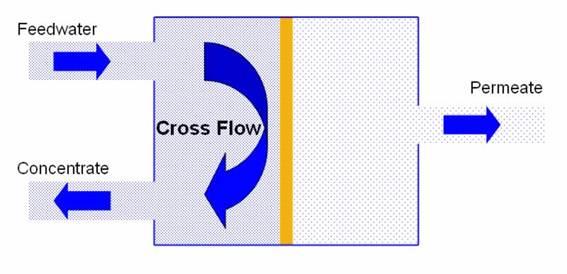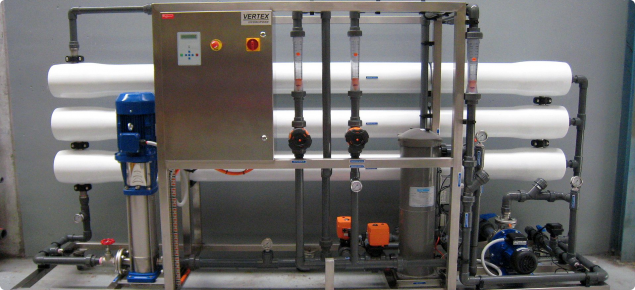Can you comply with regulations before buying a reverse osmosis plant?
Under the Soil and Land Conservation Regulations 1992, an owner or occupier of land must notify the Commissioner of Soil and Land Conservation of intending to drain or pump water from under the land surface and discharge that water onto other land, other water or into a watercourse. This includes pumping for a reverse osmosis plant that produces reject water to waste.
We recommend that you submit a Notice of Intent drain or pump (NOI) form, together with neighbour comments to the Commissioner before making large financial commitments.
How desalination can be a source of degradation
Saline groundwater is a potential water source for on-farm use, if the salt level can be reduced so that it is fit for purpose.
Desalination is the process that removes much of the salt (total dissolved salts, TDS) from water sources, such as seawater, brackish water or saline groundwater, producing 2 components: product water (permeate) and reject waterdischarge (concentrate; Figure 1). Product water has a low salt concentration and the reject water discharge contains a high salt concentration. The ratio of fresh water to reject water discharge varies from 20% to 70%, depending on the technology used and the salinity of the available feed water.
Discharge of the reject water from desalination plants onto land, into waterbodies or existing waterways can cause damage to the environment and negatively affect downstream neighbours and breach the Soil and Land Conservation Regulations 1992.

Detail for the notice of intent requirement
Notice of intent to drain – desalination
A landholder (owner or occupier) planning to use a reverse osmosis plant is required to lodge a Notice of intent to drain – Desalination (NOI) with the Commissioner, for works that are designed to take groundwater and discharge all or part of that water onto other land, other water or into a watercourse. This requirement applies even when the discharge is onto the same property. The NOID must be submitted at least 90 days before the water is discharged.
The 90-day assessment period allows the Commissioner to consider whether land degradation is likely to occur as a result of the saline discharge. Failing to lodge an NOID is an offence and may lead to prosecution. The maximum penalty is $2000 for an individual and $10 000 for a body corporate.
For more information
Contact the Office of the Commissioner of Soil and Land Conservation (details below) for information on the Notice of intent to drain – Desalination procedures and the regulations.

